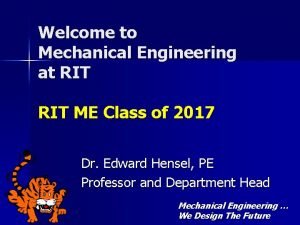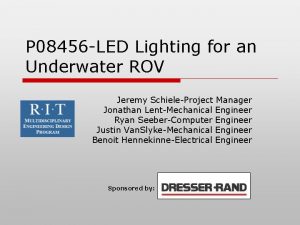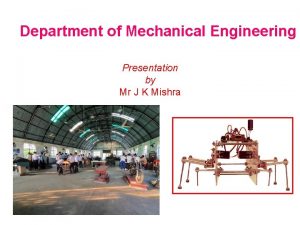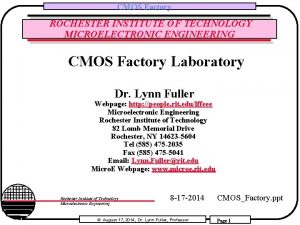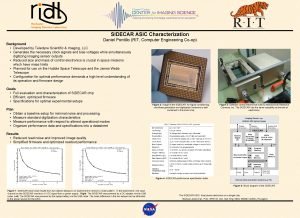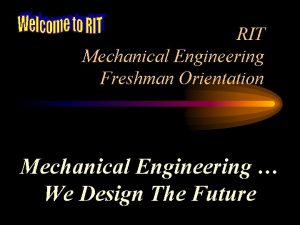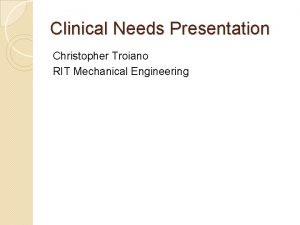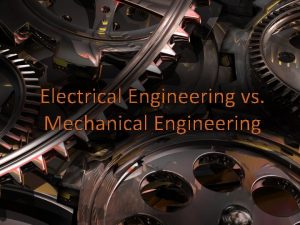Needs Presentation Joe Tartakoff RIT Mechanical Engineering Paravalvular







- Slides: 7

Needs Presentation Joe Tartakoff RIT Mechanical Engineering

Paravalvular Leakage in TAVI �Problem: Severity of valve calcification linked to degree of paravalvular aortic regurgitation �Needs: �Better adhesion for valve stenting to calcified leaflets �Better devices/techniques to reduce the need for balloon redilation or second valve implantation � 45, 000 TAVI procedures done worldwide since start, of which 12 -20% develop postprocedural PVL (severe aortic regurgitation is rare)

Endoleaks after TEVAR Procedure �Problem: Endoleaks develop in 29% of all TEVAR procedures, leading to increased risk of postprocedural aneurysm rupture �Needs: �Develop better aortic fixation (Type I endoleaks – 40%) �Develop better monitoring of aneurysm sac (Type II endoleaks – 35%) �Develop better connections between graft components (Type III endoleaks – 20%) � 200, 000 AAA per year � 30, 000 TAA per year

IVC Filter Removal �Problem: Successful removal of IVC filters are rare (3. 7% of retrievable IVC filters are actually removed) �Needs: �Develop technique/device to make removal of IVC filters easier for the surgeon (better proximal-distal control) �Develop a new IVC filter that can be removed easily �About 200, 000 IVC filters implanted per year in US (use of IVC filters has increased over the last 3 years)

Ablation in Maze Procedure �Problem: MAZE procedures can be time consuming due to non-transmural ablation and variations in the heart’s nervous structure �Needs: �Improve the delivery and outcome of ablations �Develop techniques to design individualized maze pathways �Atrial fibrillation affects roughly 2. 5 million people in US

VAD Power Line �Problem: Transcutaneous power cable responsible for most problems with VADs (infection, cable fraying, limiting device lifetime) �Needs: �Stronger and more flexible cable (higher fatigue life) �Reduce infection at the transcutaneous interface (tissue integration) �Roughly 250, 000 implanted each year (only 2, 000 transplants) �Existing Technology: �Wireless electromagnetic induction (slow recharge time) �Spiral power cable (Jarvic 2000 – still have infection)

Questions/Comments �Association of aortic valve calcification severity with the degree of aortic regurgitation after transcatheter aortic valve implantation. International Journal of Cardiology. 150 (2011) pg. 142 -145. �Endoleaks after endovascular repair of thoracic aneurysms. Journal of Vascular Surgery. September 2006 pg. 447452. �Retrievable Inferior Vena Cava Filters are Rarely Removed. The American Surgeon. May 2009. Volume 75, Issue 5 pg. 426. �The Maze Porcedure: A surgical intervention for ablation of atrial fibrillation. Heart & Lung: The Journal of Acute and Critical Care. Volume 37, Issue 6 pg. 432 -439.
